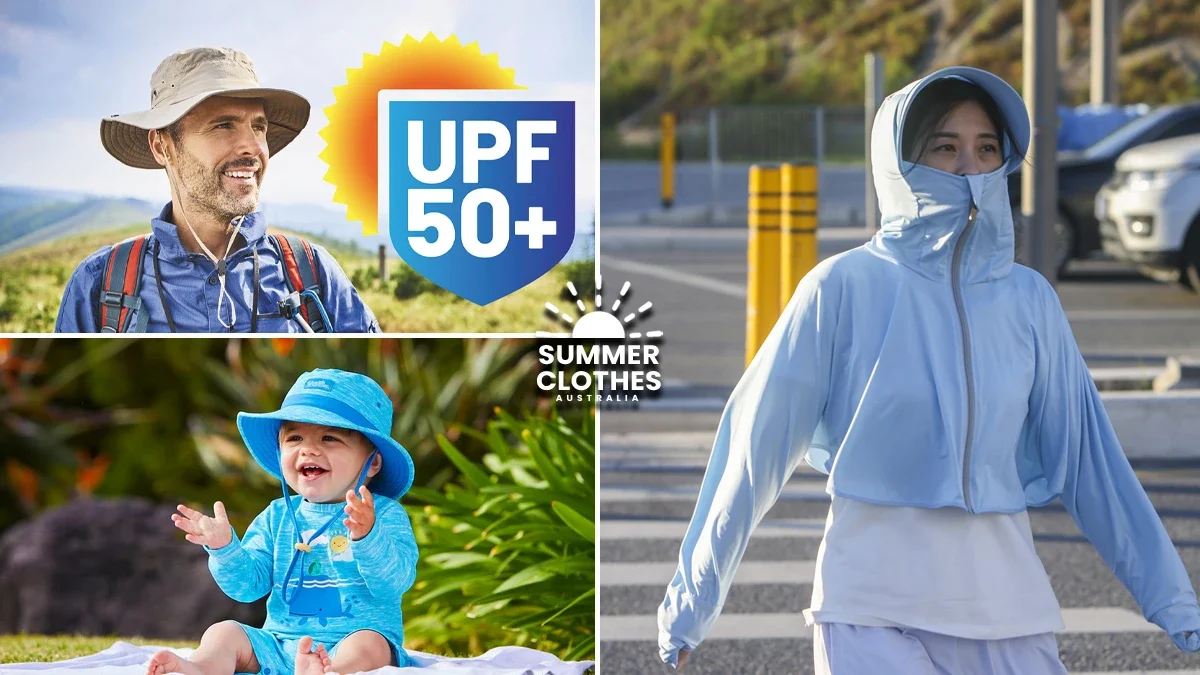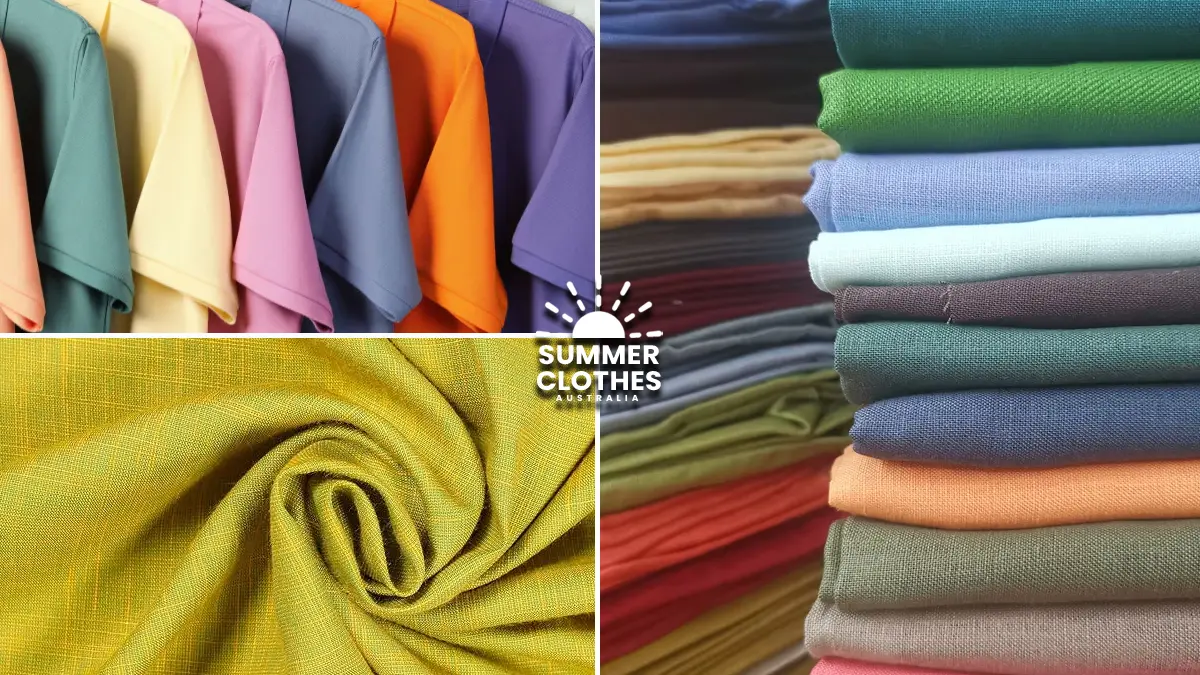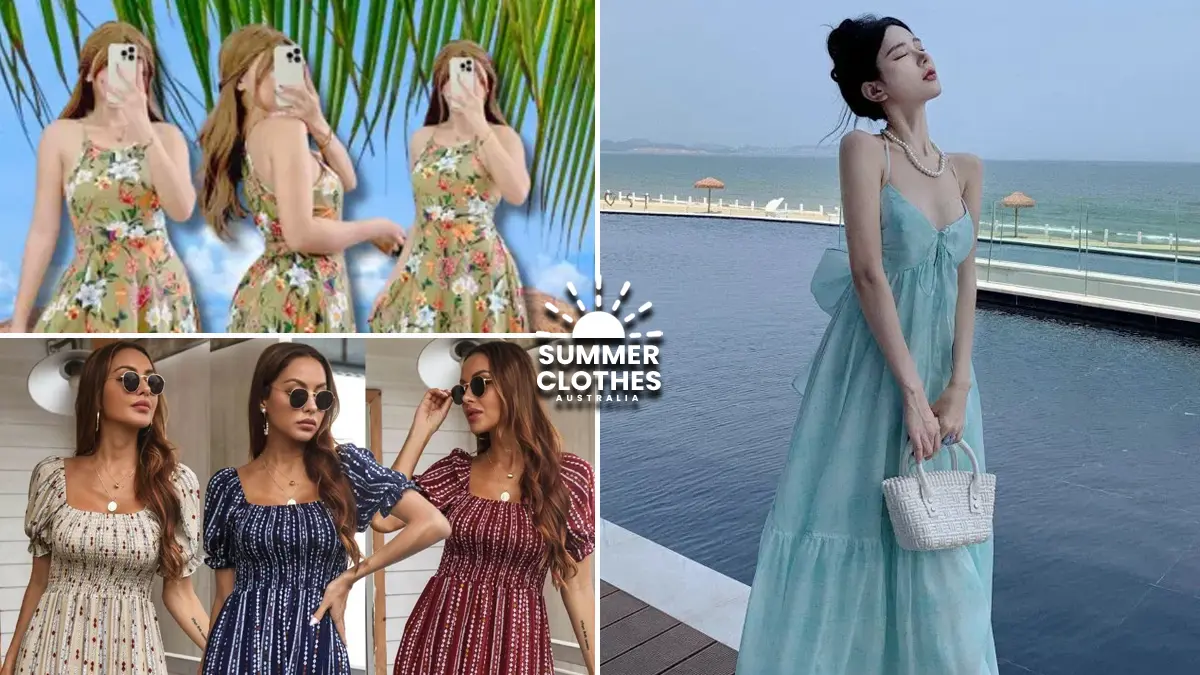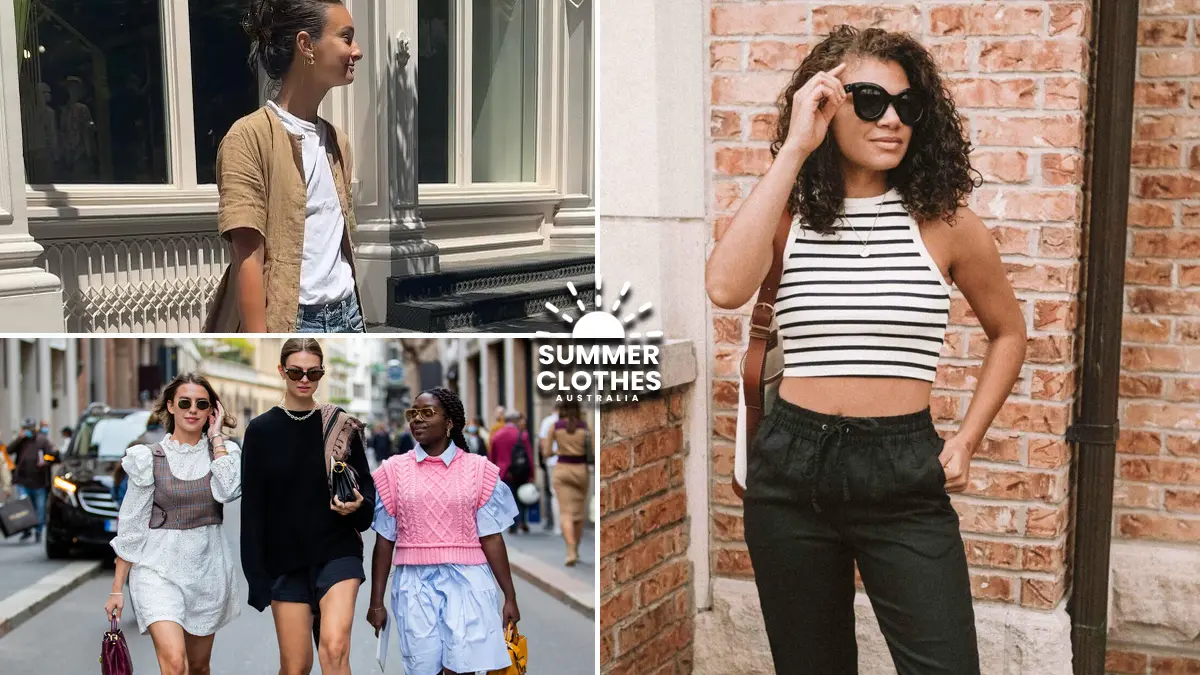Australia’s summer climate is notoriously unforgiving, with ultraviolet (UV) radiation levels reaching some of the highest on Earth. The continent’s position near the equator, combined with a thinner ozone layer and extended periods of sunlight, creates extreme exposure conditions. These factors make UV-protective clothing not just a preference but a critical necessity.
According to the Cancer Council Australia, UV radiation is responsible for 95% of all skin cancers. With two in three Australians diagnosed by the age of 70, protection must be proactive and comprehensive. The importance of UV-protective clothing extends beyond fashion; it’s about long-term health, comfort, and skin integrity.

What Is UV-Protective Clothing?
UV-protective clothing is specially designed and manufactured to offer maximum protection against ultraviolet radiation. These garments are rated using the Ultraviolet Protection Factor (UPF), a numerical rating system similar to SPF in sunscreens. The higher the UPF rating, the better the fabric blocks UV rays from penetrating through to the skin.
- UPF 15–24: Good protection
- UPF 25–39: Very good protection
- UPF 40–50+: Excellent protection
We recommend choosing clothing with a minimum UPF of 30, with UPF 50+ as the gold standard, especially during peak summer months.
Why Regular Clothing Isn’t Enough
Contrary to popular belief, not all fabrics offer sufficient UV protection. Regular summer attire such as thin cotton t-shirts, tank tops, and loosely woven garments often fails to block significant UV radiation, even when worn in layers. The danger lies in a false sense of security that can lead to prolonged sun exposure and increased skin damage.
Key reasons why standard clothing falls short:
- Fabric Weave: Loosely woven materials allow UV rays to pass through.
- Color: Light-colored fabrics reflect less UV radiation than darker hues.
- Moisture: Wet fabric significantly reduces UV protection.
- Stretch: Tight-fitting garments can lose UPF effectiveness as fibers separate.
For dependable defense against the Australian sun, UV-protective apparel engineered with tight weaves, UV-absorbing dyes, and high-performance fibers is the clear winner.
The Health Benefits of Wearing UV-Protective Clothing
Wearing UV-protective clothing provides broad-spectrum defense that significantly lowers the risk of various sun-related health issues. Here’s what makes it so essential:
- Prevention of Skin Cancer: Australia has one of the highest skin cancer rates globally, including both non-melanoma and melanoma types. UV-protective clothing creates a physical barrier that minimizes exposure to carcinogenic rays, particularly in areas commonly exposed to the sun, such as the shoulders, arms, and the back of the neck.
- Reduction in Sunburns and Inflammation: Sunburn isn’t just a surface-level inconvenience; it causes cellular DNA damage, accelerates the aging process, and increases the risk of cancer. High-UPF garments prevent the skin from reaching harmful burn thresholds, even during extended outdoor activities.
- Anti-Aging and Skin Preservation: Prolonged sun exposure leads to photoaging, characterized by wrinkles, sun spots, and loss of elasticity. UV-blocking fabrics help preserve collagen integrity and maintain a youthful skin texture, especially in often-overlooked areas like the décolletage and forearms.
Key Features to Look for in UV-Protective Clothing
Not all UV clothing is created equal. When shopping for optimal protection, consider these crucial performance indicators:
- UPF Rating: Always check the garment’s UPF label. For Australian summers, we recommend UPF 50+, which blocks 98% of UVA and UVB rays.
- Fabric Composition: Synthetic fibers like polyester, nylon, and lycra tend to offer better UV protection compared to natural fibers like cotton or rayon. Many UV garments also include ceramic-based microfibers that deflect harmful rays.
- Weave Density: Tightly woven fabrics are more effective at physically blocking UV radiation. Hold garments up to the light less transparency equals better protection.
- Color and Dye Technology: Dark or bright colors absorb more UV radiation than lighter shades. Some brands incorporate UV-absorbing dyes to enhance protective properties further.
- Garment Design: Look for coverage-oriented designs:
- High collars
- Long sleeves
- Full-length trousers
- Wide-brimmed hats
- Thumb holes to shield hands
Best Types of UV-Protective Clothing for the Australian Summer
Australia’s diverse summer activities from beach days to outback adventures demand adaptive and breathable clothing solutions. Here are some high-performance options suited for various scenarios:
Beachwear and Swim Shirts
Rash guards and swim shirts with UPF 50+ protection offer water-resistant protection without the need for constant reapplication of sunscreen. They’re ideal for:
- Swimming
- Snorkeling
- Paddleboarding
- Beach cricket
Outdoor Sports Apparel
Whether you’re hiking in the Blue Mountains or cycling along the Great Ocean Road, opt for lightweight, breathable activewear with built-in UV protection, long sleeves, and mesh zones for airflow.
Casual Everyday Wear
For everyday errands, garden maintenance, or park strolls, UV-protective polos, tunics, and trousers offer comfort and style without compromising sun safety.
Work Uniforms
Outdoor workers such as tradies, landscapers, and postal staff should wear certified high-visibility workwear with UPF ratings, offering both safety and protection.
Myths About UV-Protective Clothing Debunked
Let’s dismantle a few common misconceptions:
- “You don’t need UV clothing if you wear sunscreen.”
- While sunscreen is essential, no product stays 100% effective without reapplication. UV clothing offers continuous protection without the need for touch-ups.
- “It’s too hot to wear long sleeves in summer.”
- Modern UV fabrics are designed to be lightweight, breathable, and moisture-wicking, keeping you cooler than skin exposed to the sun.
- “Only fair-skinned people need sun protection.”
- While fair skin is more susceptible to sunburn, all skin types can suffer UV damage, including hyperpigmentation and melanoma.
Tips for Maximizing UV Protection in Summer
To stay protected during the Australian summer:
- Combine UV clothing with broad-spectrum sunscreen (SPF 30 or higher) on exposed areas.
- Wear wide-brimmed hats and polarized sunglasses.
- Avoid sun exposure during peak UV hours (10 AM – 4 PM).
- Choose shade wherever possible.
- Check UV Index forecasts daily and plan accordingly.
Investing in Your Skin’s Future
The price of UV-protective clothing may be higher than that of conventional garments, but the long-term value both in terms of skin health and reduced medical costs makes it a smart investment. By prioritizing UPF-rated apparel, Australians can enjoy the outdoors with peace of mind and proactive defense against preventable skin damage.





